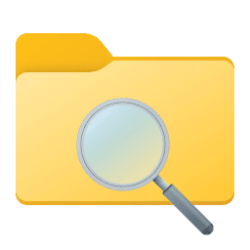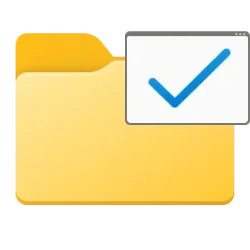This tutorial will show you how to find and list compressed files and folders in Windows 10 and Windows 11.
The NTFS file system volumes support file compression on an individual file basis. The file compression algorithm used by the NTFS file system is Lempel-Ziv compression. This is a lossless compression algorithm, which means that no data is lost when compressing and decompressing the file, as opposed to lossy compression algorithms such as JPEG, where some data is lost each time data compression and decompression occur.
Data compression reduces the size of a file by minimizing redundant data. In a text file, redundant data can be frequently occurring characters, such as the space character, or common vowels, such as the letters e and a; it can also be frequently occurring character strings. Data compression creates a compressed version of a file by minimizing this redundant data.
While NTFS file system compression can save disk space, compressing data can adversely affect performance. NTFS compression has the following performance characteristics. When you copy or move a compressed NTFS file to a different folder, NTFS decompresses the file, copies or moves the file to the new location, and then recompresses the file. This behavior occurs even when the file is copied or moved between folders on the same computer. Compressed files are also expanded before copying over the network, so NTFS compression does not save network bandwidth.
Files or folders saved into an existing compressed folder will automatically be compressed.
Contents
- Option One: Find Compressed Files and Folders and Output List in Command Prompt
- Option Two: Find Compressed Files and Folders and Output List to Text File
1 Open Windows Terminal, and select either Windows PowerShell or Command Prompt.
2 Type the command below into Windows Terminal, and press Enter. (see screenshot below)
compact /s:"<Full path of folder>"Substitute <Full path of folder> in the command above with the actual full path of the folder (ex: "C:\Users\Brink\Desktop") you want to scan for compressed files and folders in it and its subfolders.
For example: compact /s:"C:\Users\Brink\Desktop"
3 Windows will now search for all compressed files and folders in the specified folder and its subfolders, and will output a list of them in the terminal.
1 Open Windows Terminal, and select either Windows PowerShell or Command Prompt.
2 Type the command below you want into Windows Terminal, and press Enter. (see screenshots below)
(Command Prompt - output to "Compressed_Files_and_Folders.txt" file on your desktop)
compact /s:"<Full path of folder>" > "%UserProfile%\Desktop\Compressed_Files_and_Folders.txt"OR
(PowerShell - output to "Compressed_Files_and_Folders.txt" file on your desktop)
compact /s:"<Full path of folder>" > "$Env:userprofile\Desktop\Compressed_Files_and_Folders.txt"Substitute <Full path of folder> in the command above with the actual full path of the folder (ex: "C:\Users\Brink\Desktop") you want to scan for compressed files and folders in it and its subfolders.
For example:
compact /s:"C:\Users\Brink\Desktop" > "%UserProfile%\Desktop\Compressed_Files_and_Folders.txt"
compact /s:"C:\Users\Brink\Desktop" > "$Env:userprofile\Desktop\Compressed_Files_and_Folders.txt"
3 Windows will now search for all compressed files and folders in the specified folder and its subfolders, and will output a list of them to the Compressed_Files_and_Folders.txt file created on your desktop.
That's it,
Shawn Brink
Last edited:












